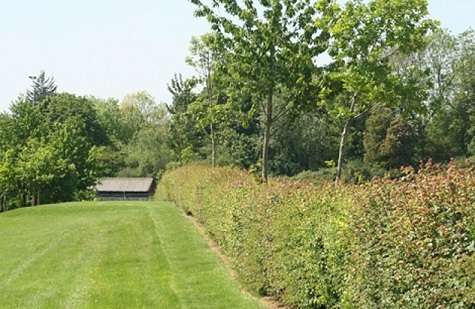Storm Francis certainly whipped up some strong winds, causing no end of damage up and down the country.
Many cricket clubs’ sight screens and covers took a battering, along with having many games cancelled due to the heavy rainfall. We seem to be getting more regular storm events at this time of the year, giving our groundsmen and greenkeepers a lot more to deal with, during a usual busy autumn schedule.
I Just want to remind you, as I spoke about it in last week’s blog, many cricket and bowls clubs should be getting ready to start their end of season renovations.
Golf courses should also be planning or even starting their winter works programme, which usually see a lot of refurbishment work being undertaken along with some autumn renovations.
There is no end of jobs to complete in terms of winter work on bunkers, tees, greens, drainage, new planting, ground clearing, paths, tree works, pond and ditches.
I personally enjoyed the winter months in terms of learning new skills and the fact that you get the satisfaction of seeing a job being done.

As for football we are just about to start a new Premier League season. We welcome back Leeds, West Bromwich Albion and Fulham. I am quite excited about Leeds getting back into the Premiership as they are a big club and have a tremendous fan base. I am sure Kiel Barrett their head groundsman and his staff are looking forward to the new season. No doubt I’ll be going up to see Kiel in the coming weeks.
As for rugby, we still have had no decision on what format the game will take for the amature level?. If it is indeed a form of touch rugby, I myself may take up the chance to get my boots back on and enjoy the joys of the game!

While on the subject of winter works, we should take the opportunity to plant more trees and hedges. I have taken the liberty of collecting some acorns brought down by the storms and have planted them in pots to see if I can get some of them to germinate next year.

As mentioned in previous articles, trees definitely bring value to our communities. Can you imagine towns and cities without any trees? They would be very depressing places to live. That’s why our parks, open spaces and urban neighbourhoods are so vibrant. We have a lot of visionaries to thank for leaving us with the landscapes we see and enjoy today.

Environmental benefits of urban trees include:
- Trees reduce 'heat island effect' of localised temperature extremes
- Their shade cools streets and buildings in summer
- Help to remove dust and particulates from the air
- Help to reduce wind speeds
- By providing food and shelter for wildlife they help increase biodiversity
- Reduce effects of flooding by slowing the rate at which rainfall reaches the ground
- Help improve polluted ground
Economic benefits of urban trees include:
- Increase property values by seven to 15 per cent
- Larger trees can lift property values in proportion to their size
- Improve environmental performance of buildings by reducing heating and cooling costs
- Mature landscapes with trees can be worth more as development sites
- Can improve the health of local populations
- Provide a long term renewable energy source
A recent article in The Telegraph explains the importance of planting trees.
Between November and March is the best time to start planting trees and hedges, particularly planting bare root stock material which tend to be cheaper than containerised plants and trees. I personally believe we should encourage more planting of hedges.

Some hedgerows are so important that no amount of planting could replace them. The government has brought in legislation to protect hedgerows of key importance (currently in England and Wales only). Hedgerows provide food and shelter for many species. Because they often link small woods, they are essential protective corridors along which wildlife can travel.
Hedges may support up to 80% of our woodland birds, 50% of our mammals and 30% of our butterflies. The ditches and banks associated with hedgerows provide habitat for frogs, toads, newts and reptiles. Hedges are an excellent feature to plant, providing a wealth of benefits, acting as a wind break, barrier or screen.

Next time you are out walking, take the opportunity to admire our wonderful countryside and see for yourself the impact hedges have made over many generations. It now down to us to continue to properly manage these precious heritage landscape features for future generations to enjoy.